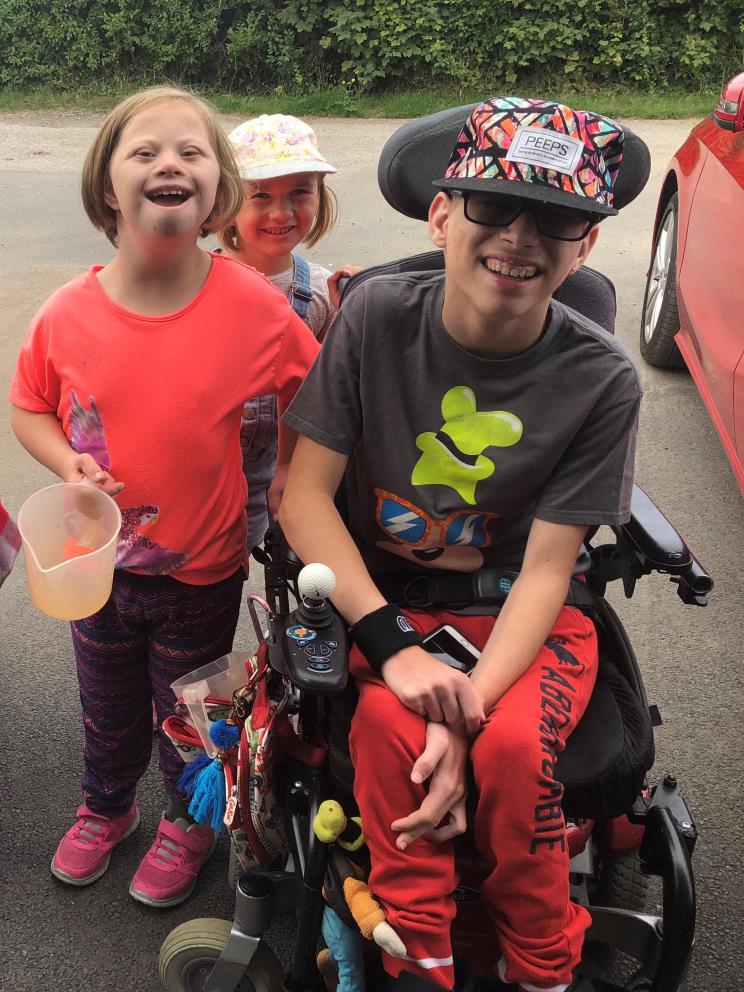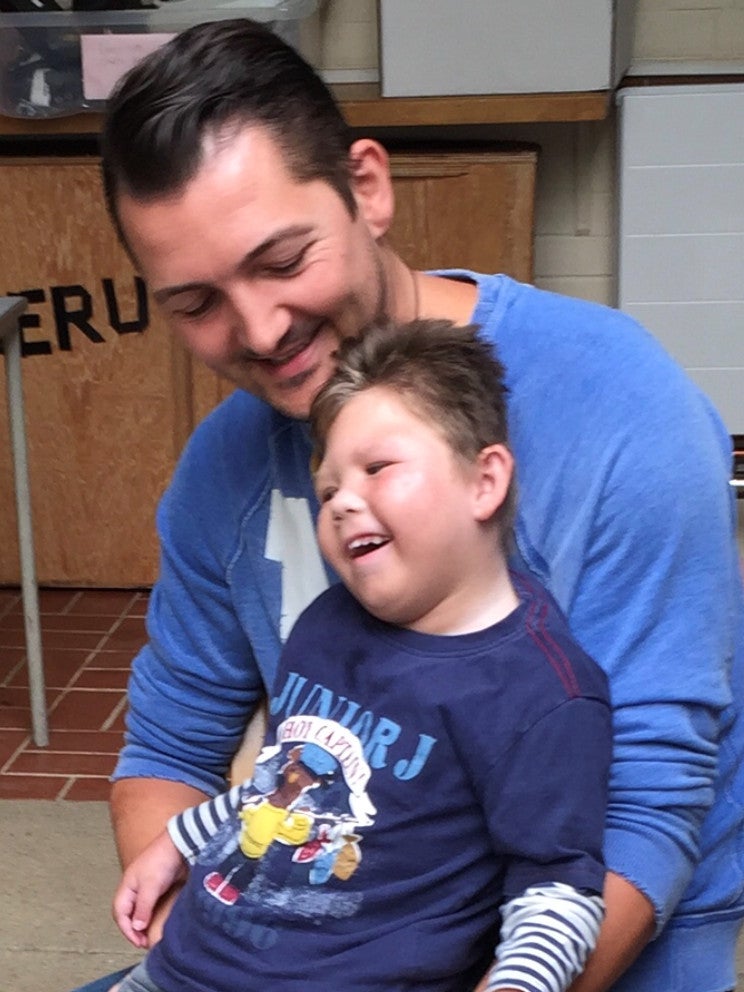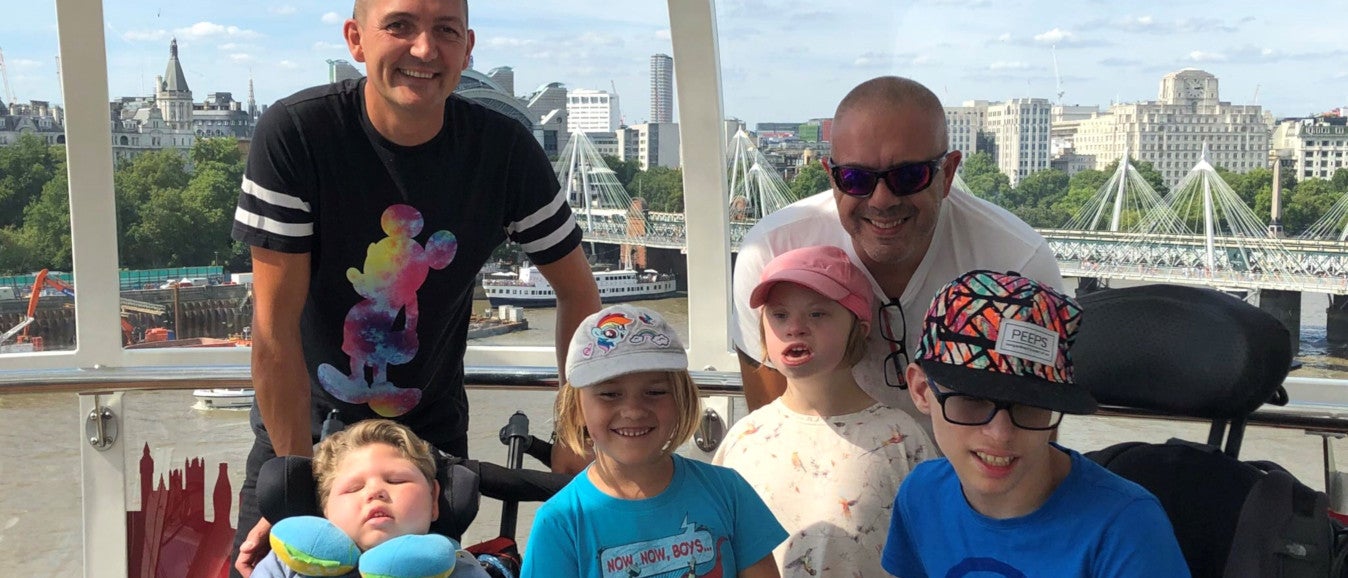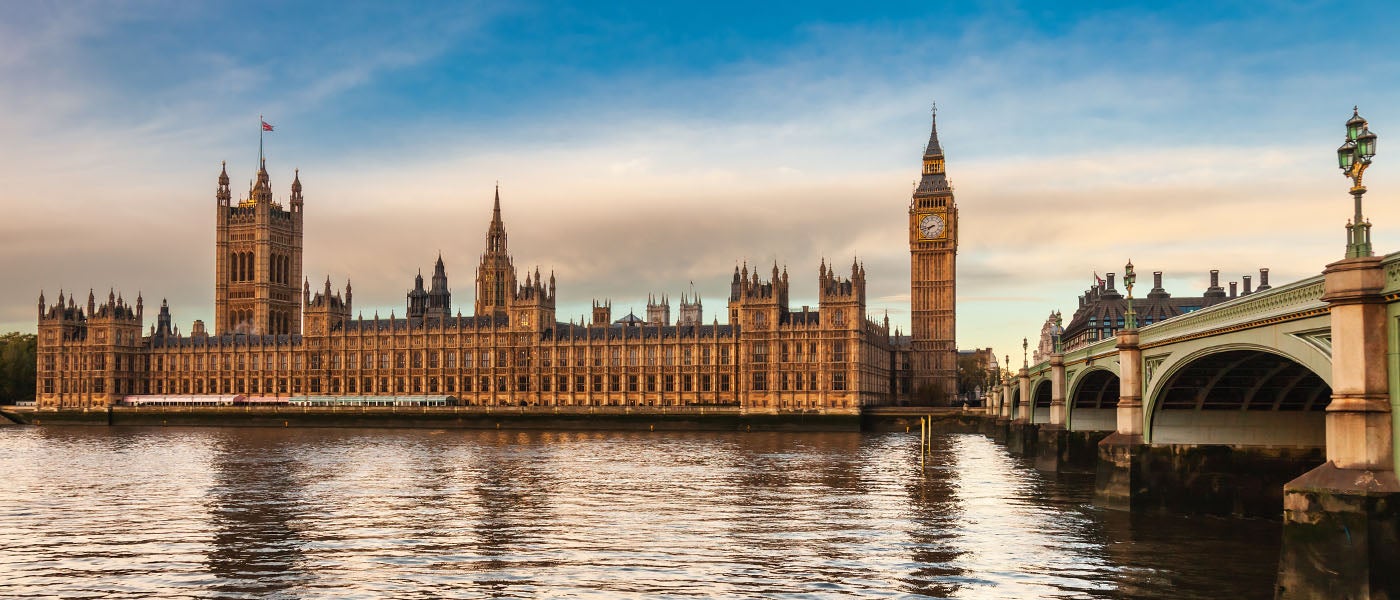- Home
- News and stories
- The extra costs we face as a family with disabled children
The extra costs we face as a family with disabled children
 22 February 2019
22 February 2019
My name’s Garry Ratcliffe. I’m 45. Together with my husband, Kyle, we are the proud parents of four children who we adopted; Haydn, who has Cerebral palsy and is blind in one eye, Bella, who has Down's syndrome, Curtis, who has a number of impairments and conditions, including Cerebral palsy and Global development delay, and Phoebe who isn’t disabled.
Specialist equipment for disabled children comes with hidden costs
When it comes to disability related extra costs, they’re ongoing and come year on year, particularly if you have children who need specialist equipment. Not only is there the cost for the equipment, which sometimes is covered by the NHS and sometimes is not, but then you’ve got additional maintenance costs.
For example, Haydn has Cerebral palsy and he uses a power chair. The specs for the power chair, which was provided by the NHS, didn’t fully meet his needs. So Haydn wanted a riser on his chair so that if he went into a shop, he could make the chair go up or down, would be able to speak over a counter maybe, or when he went for appointments, he could check himself in.
Those type of requirements don’t come under the commissioned plan for wheelchairs within our area, so we then had to pay an additional £1,000 to enable that riser to be put on his wheelchair.
That’s obviously our choice to pay that money, but it improves quality of life for Haydn and enables him to be able to speak to somebody at an appropriate level, because he doesn’t want to be invisible.
So we paid the £1,000, but it doesn’t stop there because you’re then liable for any maintenance, breakages or repairs needed on that particular piece of equipment. So, whilst the chair is being serviced by the NHS, we still have to pay to service the riser, because that isn’t the property of the NHS.
If we have to pay insurance, the insurance will come with the chair, but we pay extra for the riser. So that is sort of a hidden addition that is even on top of the add-on for the chair.

Pictured above left to right: Kyle, Garry, Phoebe, Isobella, Curtis and Haydn Ratcliffe
Healthcare professionals need a better understanding of the needs of disabled people
When it comes to the costs associated with equipment, I think many see an increase in NHS funding as a solution. One thing we’re really keen on as a family, is for greater empathy from some health care professionals. We have to watch our budget, and adhere to the policy and commissioning plan for Haydn’s power chair, but what we were offered didn’t suit his needs.
We fought for an upgraded version to that chair, because it didn’t fit under our dining room table. I don’t think Haydn was treated in a particularly empathetic way. He was told that was the compromise he’d have to make. If he wanted the power chair, he maybe wouldn’t be able to sit with us to eat his meals because of its height. Some people will see that add-on as a luxury, but certainly for Haydn, and other young people like Haydn, it's a necessity.
I fully understand there’s not an endless stream of funding, but there needs to be a greater look at funding for these types of equipment, as well as greater empathy by the team providing them.
The ‘special needs price tag’ for disabled children’s toys
Phoebe has a new bike. It cost £90. Curtis had a new bike recently. It was £600. Why? Special needs! It's interesting to see the premium often put on toys and games if the words 'special needs' are added to the description
I think there are also items marketed in special needs catalogues that are targeted for children with a learning disability, for example, that you may be able to find in a baby or toddler department for half the price.
We've often bought our son, Curtis, things intended for the garden, like solar panel lights or disco lights from maybe a more mainstream shop that'll be much cheaper, but do exactly the same thing as lights labelled ‘sensory’.
I look at the insurance first when planning a holiday for my disabled children
We’re going on holiday with friends of ours. They’re a married couple with a two-year-old daughter without a disability. Their insurance was around £60 for the holiday for the three of them. Ours was £495.
Disney is always really popular with families with disabled children, for all sorts of reasons - one being their attention to disability issues, which is really good. So if you’re saving up for a Disney holiday, the first thing you’ve got to decide, is whether you can afford the insurance to go along with the holiday. Insurance is the first thing that I look at now when planning a family holiday.

Pictured above left to right: Phoebe, Isobella and Haydn Ratcliffe
From extra water to extra energy, the disability related extra costs are ongoing
The additional costs, like the washing, the ironing, the tumble drying, running the bath - are constant and have a significant impact.
Our house is a 24 hour running house, as Curtis has overnight care. Our washing machine seems to be constantly on.
We talk to our friends with four children about their costs and needs. Their washing machine is going all day Saturday, and they may change the children’s bedding once a week, or maybe once every ten days. We have three sets of bedding per day to wash and dry. Including our own bedding, that’s 23 sets of bedding per week!
Our electricity direct debit is £485 per month, and we seem to always be playing catch-up. Why is it so high? We have two children with electric beds, we have an oxygen condenser, we have a stats machine which measures Curtis’ oxygen saturation and heart beat that runs 24 hours a day. We have a suction machine, we have heat pads to control Curtis’ temperature (as he can’t regulate it himself), and we have lights for stimulation. That is without even thinking about the other everyday running costs that every family faces.

Pictured above: Kyle and Curtis Ratcliffe
Disability Living Allowance doesn’t cover all the costs
I remember really clearly an example of when we were trying to describe to a particular nurse, that three incontinence pads a day were not enough for Haydn, and whether you call them nappies or pads, three a day was not enough. We said we need four as a minimum, preferably five. The response that came back was, “well that’s what you get your Disability Living Allowance is for,” and actually it’s not.
I think there's a huge misunderstanding from people who receive DLA, as well as those in positions of authority, or offering advice about what it should be used for.
We're so lucky to have support from the local community
We are incredibly fortunate because we are in a strong united family and have really good neighbours around us. We have strong friendship groups and I know we’re very fortunate to have that.
We know some of our own friends who don’t have that from many people, so in terms of emotional support, we are able to access this through our existing networks.
Starting off as foster carers, and then as adopters, the importance of having emotional support as parents of disabled children was almost ingrained into me and Kyle. But some parents have never been able to access that emotional support which is just so important when facing the challenges ahead.
Disability Price Tag report
Scope's new report, The Disability Price Tag, reveals the disability related extra costs parents and working age disabled adults face.
Read the report and learn how you can support the campaign by writing to your MP.
 22 February 2019
22 February 2019








